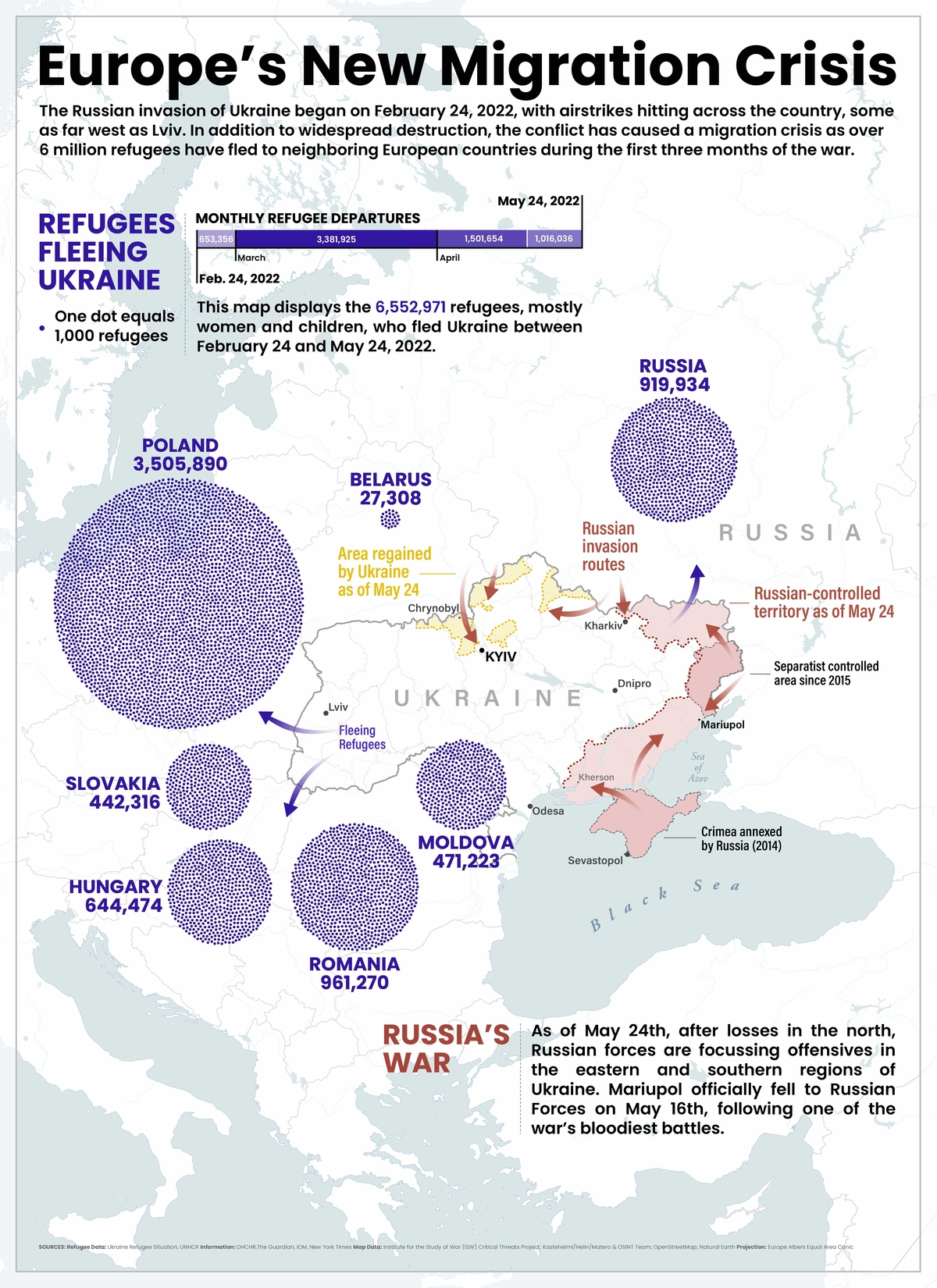
Mapped: The Ukraine Refugee Crisis in Europe
The world has seen several refugee crises over the last decade, from conflicts in the Americas, the Middle East, Africa, and Asia. However, over the last few months, another migrant crisis has emerged, and once again Europe has been the focus.
On February 24, 2022, Russia launched a full-scale military invasion of Ukraine. Since then, millions of Ukrainians have fled their homes in search of refuge, with a majority heading through neighboring countries like Poland, Romania, and Russia.
This map by Elbie Bentley uses immigration data from the UN Refugee Agency (UNHCR) as of May 24th, 2022 to visualize current migration crisis that’s happening across Europe. It shows where Ukrainian refugees crossed borders as they fled the conflict.
Refugee Border Crossings into Neighboring Countries
Since Russia’s invasion of Ukraine, close to 6.6 million people have fled Ukraine to neighboring countries. Put another way, this is the largest refugee crisis in Europe since WWII.
| Country | # of Border Crossings (as May 24, 2022) |
|---|---|
| Poland | 3,505,890 |
| Romania | 961,270 |
| Russia | 919,934 |
| Hungary | 644,474 |
| Moldova | 471,223 |
| Slovakia | 442,316 |
| Belarus | 27,308 |
Data above is from Feb 24 to May 24, 2022. The situation is fluid, and we recommend visiting the data source linked above for the latest data.
Though the UNHCR tracks departures individually, it’s important to note that arrivals can include people who’ve crossed multiple borders after leaving Ukraine. For example, a refugee heading to Romania via Moldova may be counted twice in the dataset. For this reason, adding the individual country totals together results in a number higher than 6.6 million.
Poland has seen the highest number of Ukrainian refugees, with an estimated 3.5 million people crossing the border since February 24th. About a million of those refugees have been registered in Poland, and 94% of those registered refugees have been women and children.
Russia has received the third most refugees, with many of them coming from or near separatist regions in the east of Ukraine. Russia also says it helped evacuate 140,000 civilians from Mariupol, but claims that those populations were not forced to migrate to Russia.
Hungary has seen the fourth-largest influx of refugees, seeing 644,474 Ukrainians cross into the country since the start of the conflict. In recent years, the Hungarian government been in the headlines because of its views towards migrants, including in 2018, when Hungary’s Prime Minister Viktor Orbán made controversial comments about Syrian refugees.
While the above countries are the entry points for refugees, it’s worth noting that many migrants ultimately make their way to many other places throughout Europe and the world. For example, Germany has accepted 780,000 Ukrainian refugees since the start of the war, despite not sharing a border directly with Ukraine.
An Internal Refugee Crisis
While many Ukrainians had fled the country, millions more have been displaced or trapped within.
As of the end of May, approximately 8 million Ukrainians have been forced to relocate, while approximately 13 million are either stranded in areas affected by the conflict or trapped because of things like increased security or infrastructure damage.
Ukraine and Russia are reeling from the war and its impact, and a ripple effect is hitting countries dependent on Ukrainian trade for agricultural and industrial goods and Russian oil and gas. Add the migrant crisis to the mix, and the total consequences will be felt for decades throughout the region.
The post Mapped: The Ukraine Refugee Crisis in Europe appeared first on Visual Capitalist.